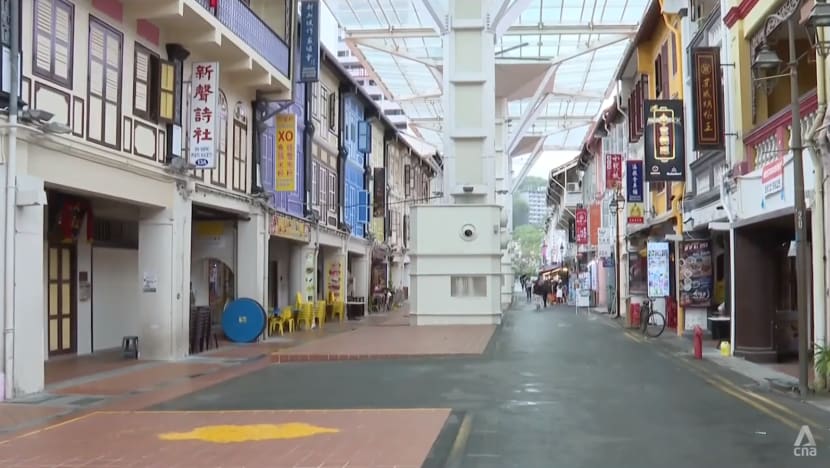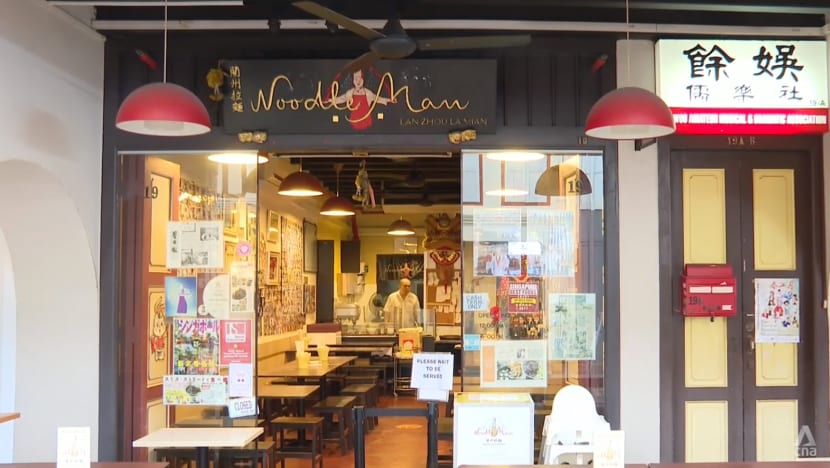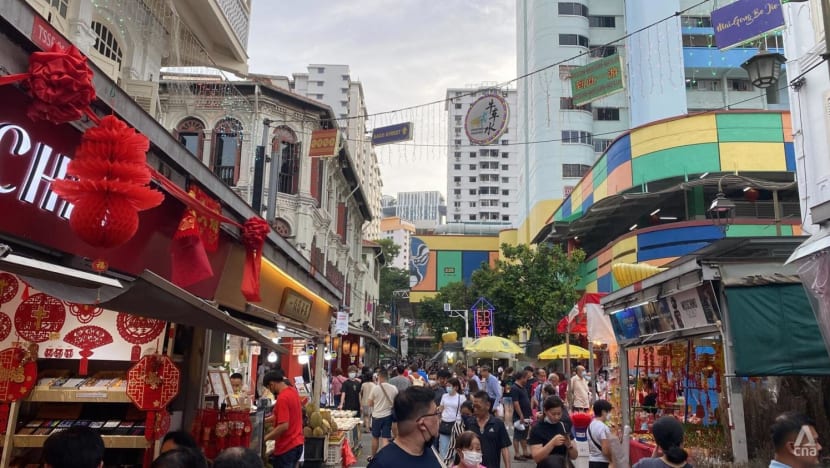Smith Street revamp: Chinatown businesses look to preserve culture, experts warn against gentrification
A row of 13 shophouses along Smith Street in Chinatown is up for tender to appoint a single master tenant, as part of plans to rejuvenate the historic conservation area, and drive greater footfall while maintaining the precinct's culture and heritage.

The tender, which will target the row of shophouses from 11 to 37 Smith Street, was launched on Thursday (Nov 30) and will be open for 12 weeks.

This audio is generated by an AI tool.
SINGAPORE: A row of 13 shophouses along Smith Street in Chinatown is up for tender to appoint a single master tenant, as part of plans to rejuvenate the historic conservation area.
Businesses in the area are hoping the project will drive greater footfall without compromising on the precinct's culture and heritage.
The tender, which involves the row of shophouses from 11 to 37 Smith Street, was launched on Thursday (Nov 30) and will be open for 12 weeks.
Units on the second and third floors of shophouses from 11 to 21 Smith Street will not be affected. Some of them house arts entities like a poetry society and the Singapore Association of Writers.
Key goals of the tender include reviving the area's heritage as a Chinese opera hub and bringing in food offerings that showcase Singaporean cuisine.
The tender also covers the pedestrian walkway which was the site of the former Chinatown Food Street, which opened in 2001 as part of previous efforts to revitalise Chinatown, and underwent an overhaul in 2013 that included a new roof to protect diners from bad weather.
However, the food street lost its sizzle over the years and eventually closed in 2021 due to a lack of both local and foreign visitors.
BRINGING BACK THE BUZZ
The tenancy of all existing businesses at the site will end by the middle of next year.
Noodle Man Lan Zhou La Mian owner Wong Seng Wai, who has been operating at Smith Street for 24 years, told CNA that business is now just about 60 per cent of what it was before the COVID-19 pandemic.
He wants to stay on under the new master tenant after his tenancy ends next April, as his customers are mostly regulars, and it would take a few years to build up his business again if he were to move elsewhere.
Mr Wong added that he hopes the new master tenant will bring in heritage food offerings and not over-commercialise the place and drive up rents.

He believes that if businesses focus on things locals can enjoy, then foreigners will naturally also start coming.
The Chinatown Business Association’s executive director Lim Yick Suan said the organisation is looking forward to new offerings and concepts to bring the buzz back to the district.
"We are hopeful to have a very, very close collaboration with the new operator to promote and augment Chinatown's rich heritage and culture,” she said.
“With this, we hope that visitors to Chinatown, (including) Singaporeans and tourists from all around the world, can enjoy and deepen their experience in Singapore's Chinatown even more."
PREVENTING GENTRIFICATION
Dr Lee Nai Jia, head of real estate intelligence at PropertyGuru, said the move to rejuvenate the Chinatown district is timely.
He noted the efforts that have taken place since 2001, including the introduction of new food concepts in the area, and said that much more can be done to better utilise the space.
“The food street itself also faced challenges. There are a lot of other food options in the area (and) there are also some affordable food options at the hawker centre,” Dr Lee told CNA’s Singapore Tonight.
“I think overall what happened is, you see that the trade mix is changing, and there seems to be a kind of disconnect with the original intent. So I think this is a very good time for a refresh of the concept.”
Dr Lee however warned of the risks of gentrification in the area and called for a balance in ensuring that things will be affordable not just for tourists, but for locals too.
“For this particular Smith Street area, we are seeing that when things become too expensive, it is also very difficult for you to flourish,” he noted.
"From a commercial viability point of view, there needs to be a balance where there's a certain level of affordability in the area, not only for tourists, but for the local population to come here to entertain guests or their friends, and get engaged with each other.”

BENEFITS OF MASTER TENANCY
The lease for the new master tenancy is for five years, with an option to renew for another four years, a duration which gives interested parties more confidence to invest in the project.
Retail leases typically last for three years, with options to renew for two more three-year stretches, explained Dr Lee, but the Singapore government has switched to allowing longer lease terms in recent years.
“When we are looking at such an area, the key part here is that the investor or the master tenant has to invest quite a significant amount of money,” he said.
“The government made a change to allow a longer lease term, at least for the first part, so that the master tenant could actually get back their returns and amortise their capital expenditure. That gives the master tenant that kind of comfort level to invest more, especially at the infrastructure to make it successful.”
Dr Lee said that having a master tenant lets one decision-maker choose how to best utilise the space and what is the right mix of shops to have.
“They make sure the tenant mix is coherent, and there's a certain level of maintenance of the area. So generally, it helps bring up the area’s value. But of course because of that, sometimes you lose the kind of chaos (and) that kind of spontaneity in the area,” he said.
He added that the make-up of the Chinatown district is a vibrant mix, with a younger population at the Pinnacle@Duxton estate and a more elderly population on the other side.
The development of the area has to be tied back to its heritage and cultural values, said Dr Lee.
“That is a very tricky part, because when we look at this context of economy, the way things are moving is at a very fast pace. We no longer can go back to what it used to be in the 60s,” he said.
“Rather than focusing on the type of activities, I think one of the key things is how we blend in what’s old and new together.”
















